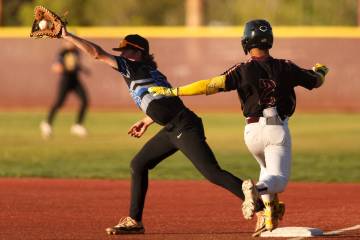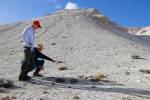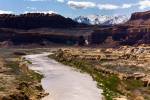Report warns of damages from pumping aquifer water to LV
The Southern Nevada Water Authority’s expensive plan to pipe water from Northern Nevada and western Utah to Las Vegas Valley spigots appears to have sprung another leak.
A recently released study by the U.S. Geological Survey that analyzed the potential impact on the region the SNWA is looking to tap makes it clear the Las Vegas water grab would substantially damage the regional aquifer. That’s hardly surprising given the fact Nevada’s state engineer in 2012 granted the SNWA the right to pump up to 83,900 acre feet from Lincoln County. Another 51,000 acre feet has been locked up in Snake Valley, Utah. (The SNWA has since agreed to pump no more than 34,000 acre feet from the Utah side.)
The objective of the USGS study was to address regional concerns about the potential damage to the groundwater should the pumping ever commence on the scale being discussed. The study focused on the “links between the basin-fill and carbonate aquifer systems, groundwater flow paths, sources of water to springs, and the movement of groundwater between basins in the Snake Valley area.”
Titled, “Hydrology and numerical simulation of groundwater movement and heat transport in Snake Valley and surrounding areas, Juab, Miller, and Beaver Counties, Utah, and White Pine and Lincoln Counties, Nevada,” the 107-page report scientifically establishes what the region’s ranchers and other critics of the SNWA plan have believed from the start: Pumping large amounts of water from the basin will damage springs and the ability of the harsh environment but fragile ecosystem to recover whether in normal years or seasons of drought.
Ranchers and farmers already tap the Snake Valley aquifer, and their long use has had an impact on groundwater recharge. It’s not difficult to imagine the impact of a substantial increase in pumping of the area.
“We are already seeing effects of current withdrawals depleting the springs,” the study’s co-author Melissa Musbruch of the USGS told the Salt Lake Tribune. “Future withdrawals will deplete springs as well.”
As with other government reports on the region’s volatile water resource issue, it doesn’t take a political position but relies on scientific findings and statistics. The reader is left to draw his or her own conclusion. It also took into account previous studies with a goal that “it can be used for examining the long-term effects of continued or increased groundwater withdrawals on the regional groundwater flow system and natural groundwater discharge, which can aid in effective management of groundwater resources.”
Not that anyone who has followed this issue believes the most meticulous research will be what finally deters the SNWA’s vision of a pipeline from the rural counties to the developers’ promised land. It’s the political pipeline critics of the project ought to be tapping into if they really want to prevail.
Perhaps with that in mind, the Salt Lake Tribune weighed in Monday with a renewed call for common sense in the face of yet another report that makes it clear taking water from Northern Nevada and Western Utah is short-sighted and damaging.
“These days, and for the foreseeable future, Utah and the West are back to their normal hydrological status: a great big desert, with extra-dry conditions forecast as far as the scientifically enhanced eye can see,” the newspaper observed. “Which is why policy makers in Utah and Nevada should pay heed a new report from the U.S. Geological Survey, and to a pending report from the Utah Geological Survey, both pointing to the same conclusion.”
The conclusion: Tampering with the water table promises to “devastate the already fragile ecological and economic situation found there. … Not that it should have taken a faculty of PhD.s to figure that one out.”
The SNWA’s grand pipeline plan gets harder to fathom each day.
John L. Smith’s column appears Sunday, Tuesday, Wednesday, Friday and Saturday. Email him at Smith@reviewjournal.com or call 702-383-0295. Follow him on Twitter @jlnevadasmith.





















